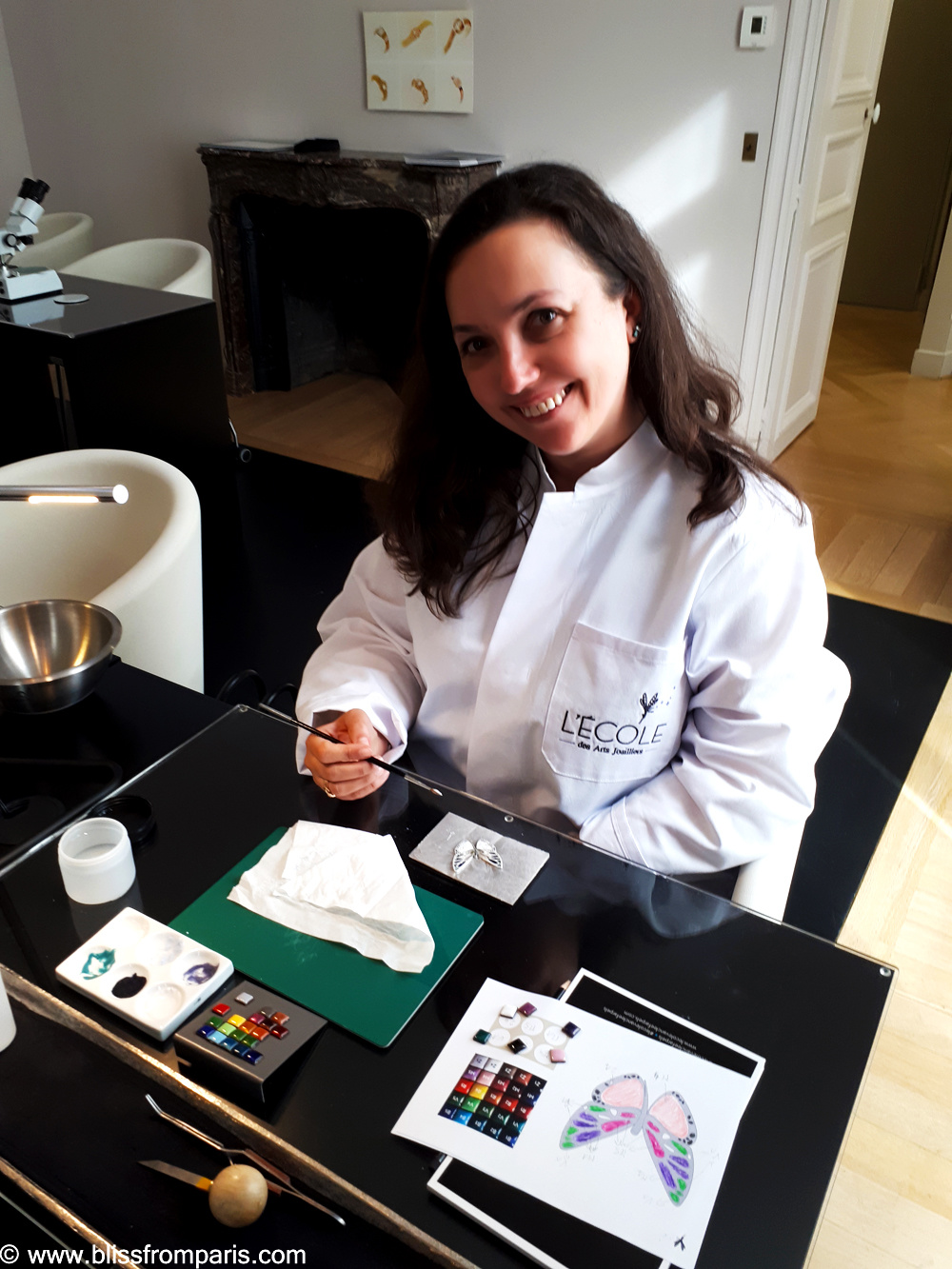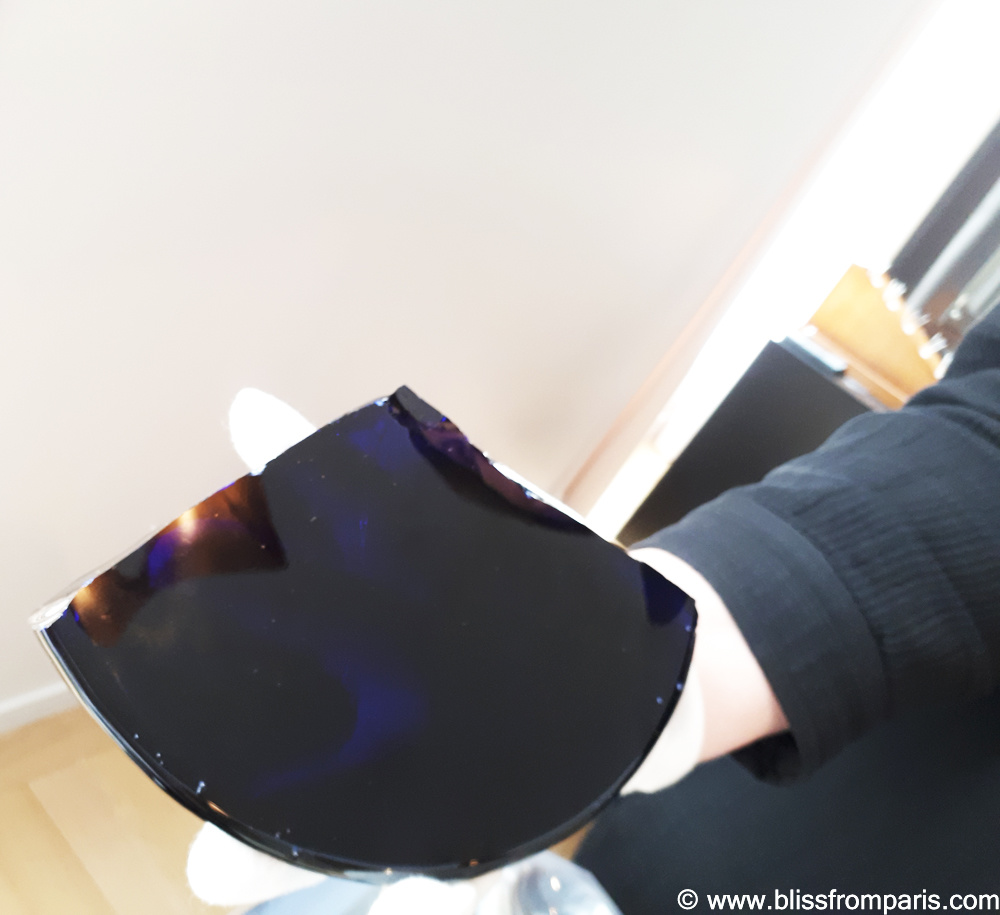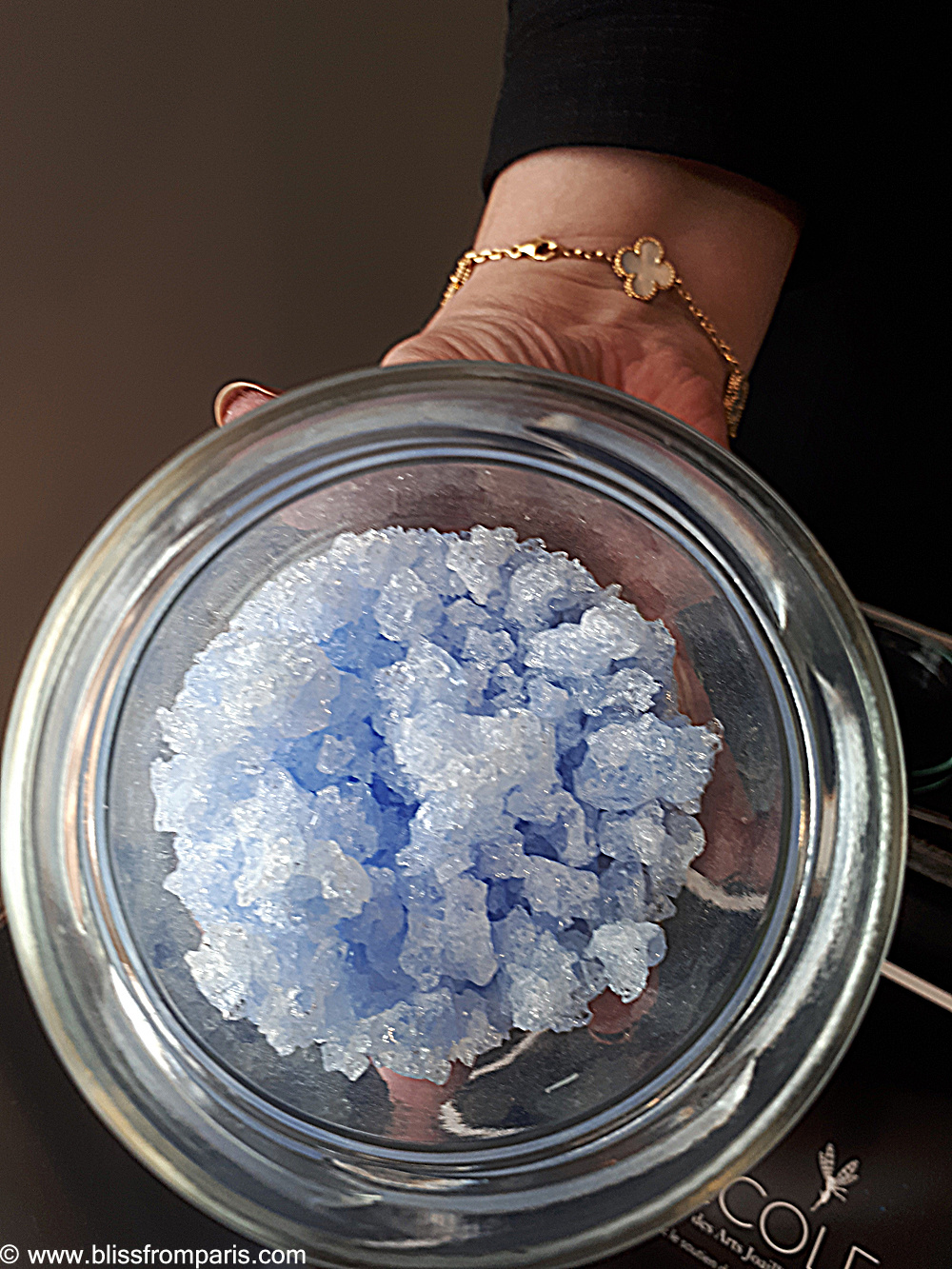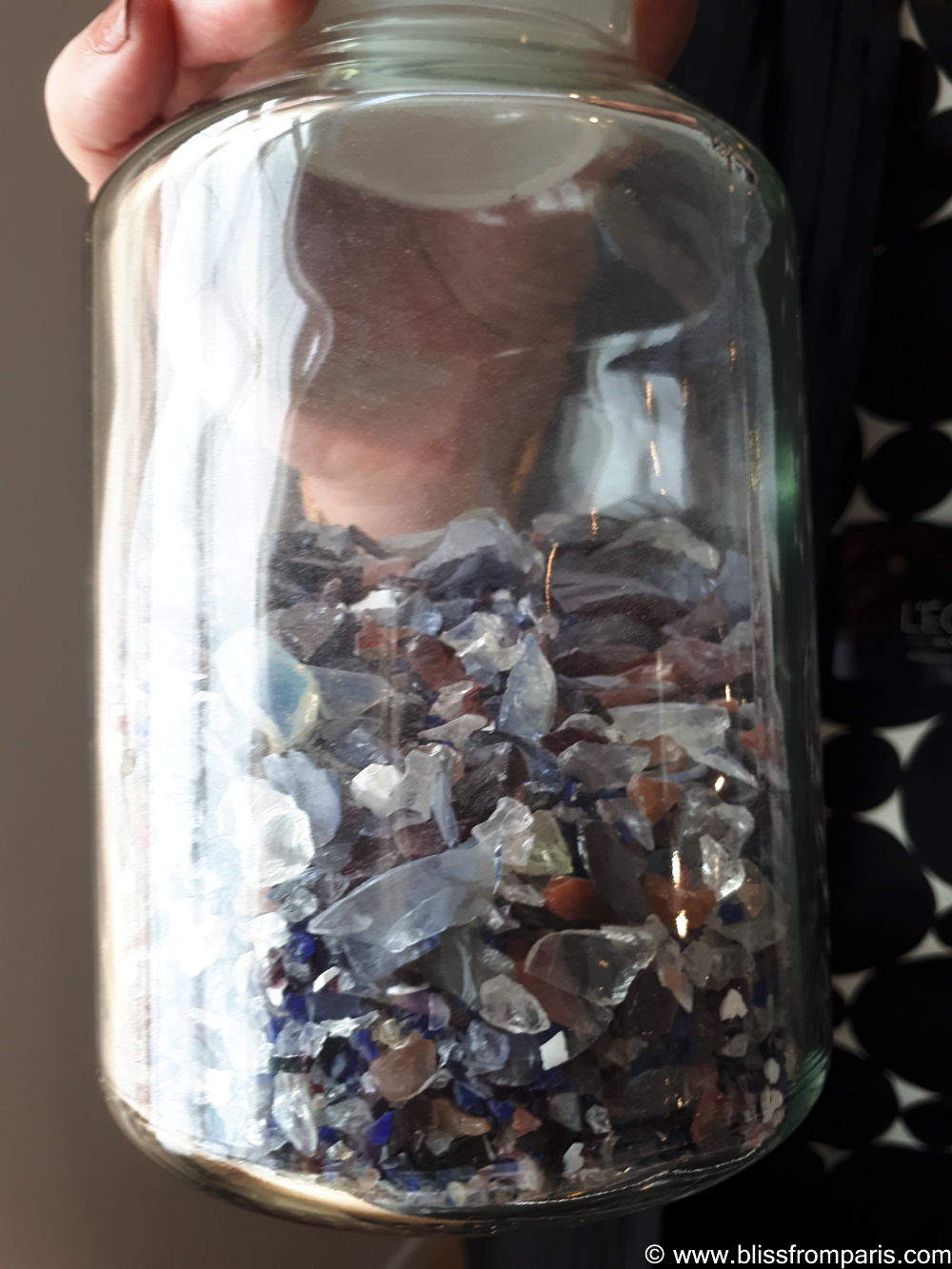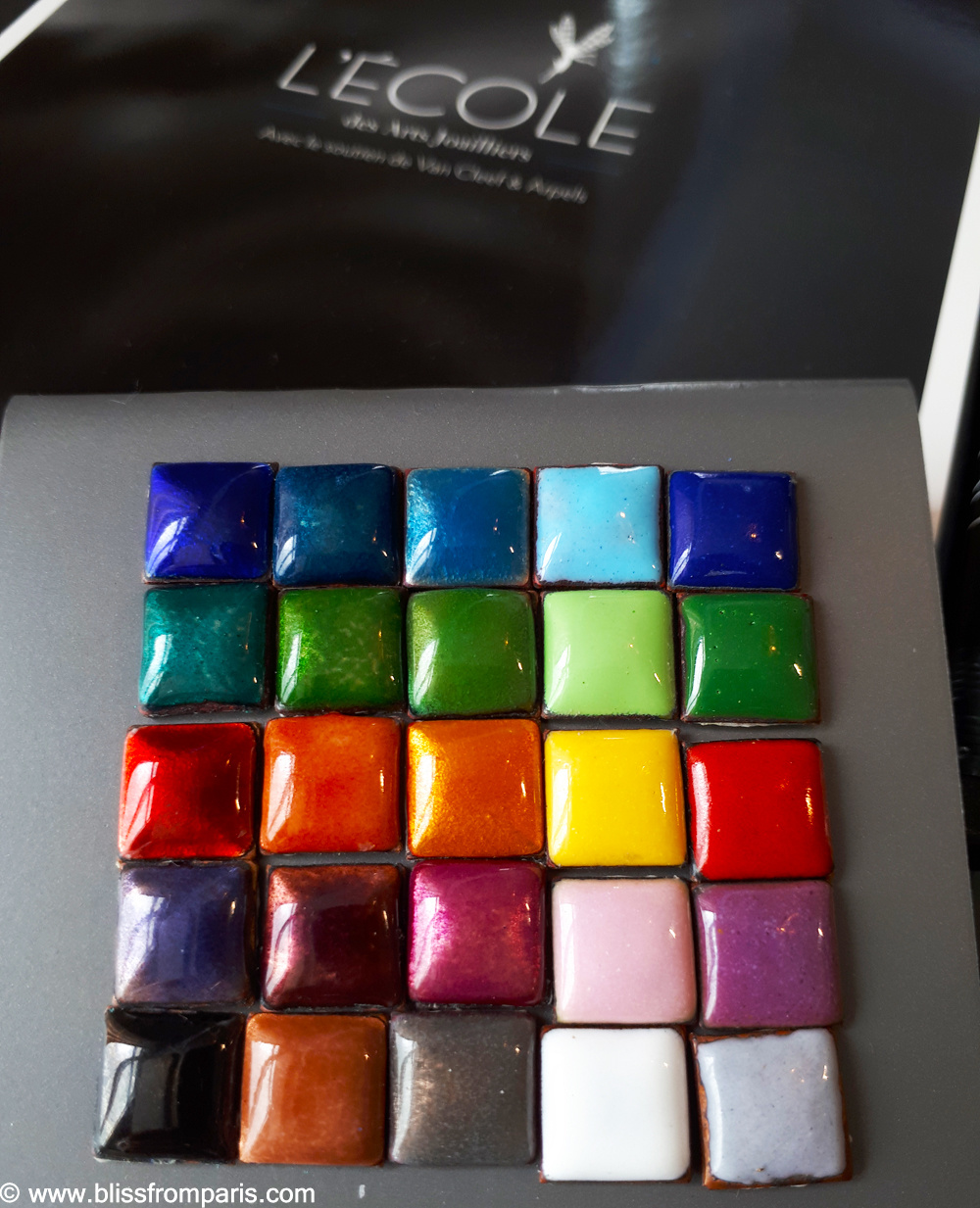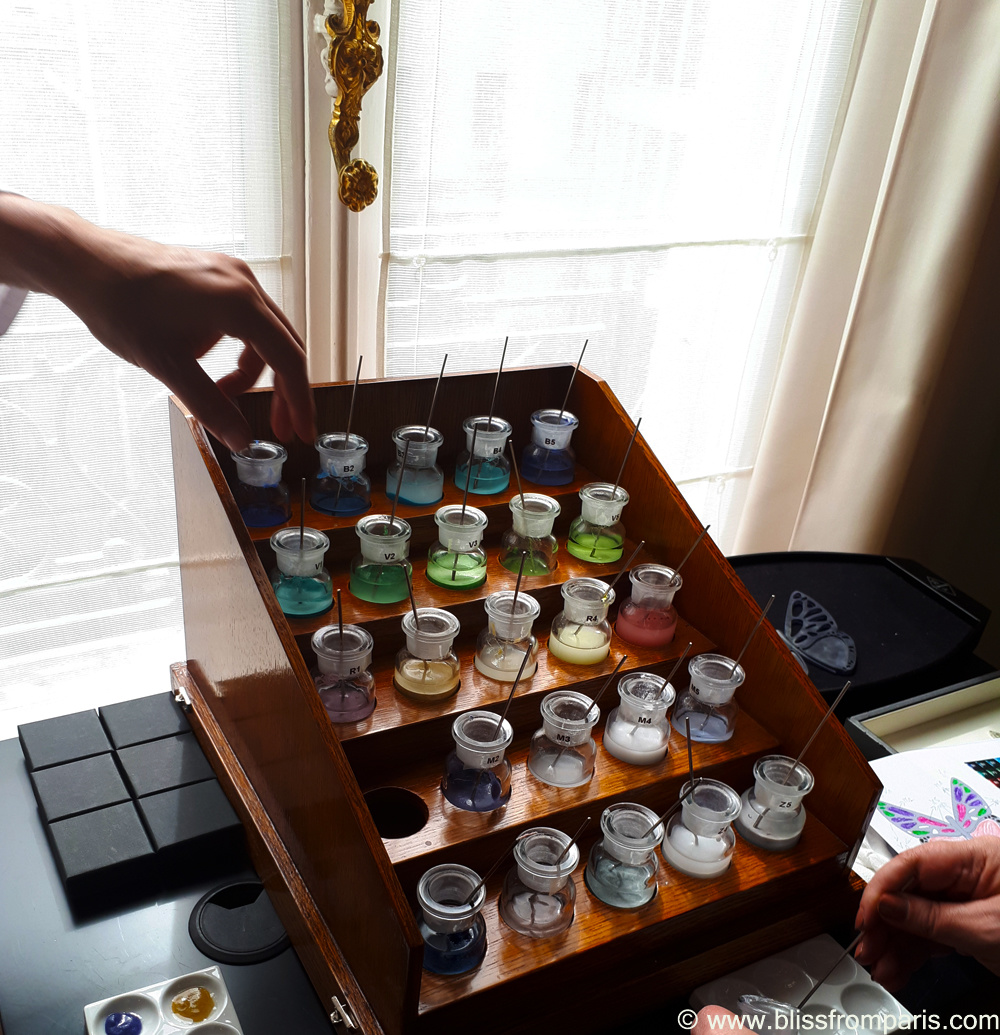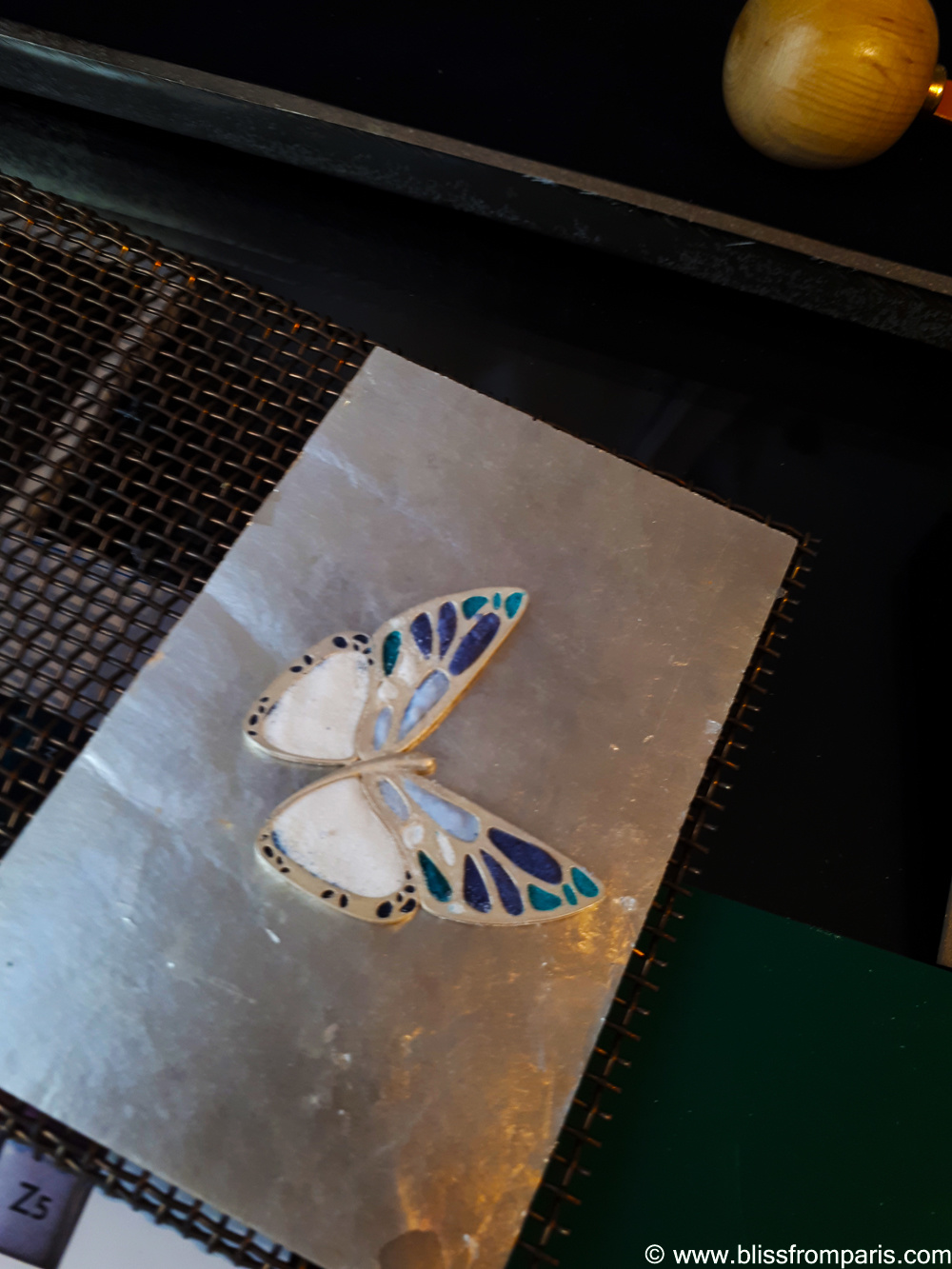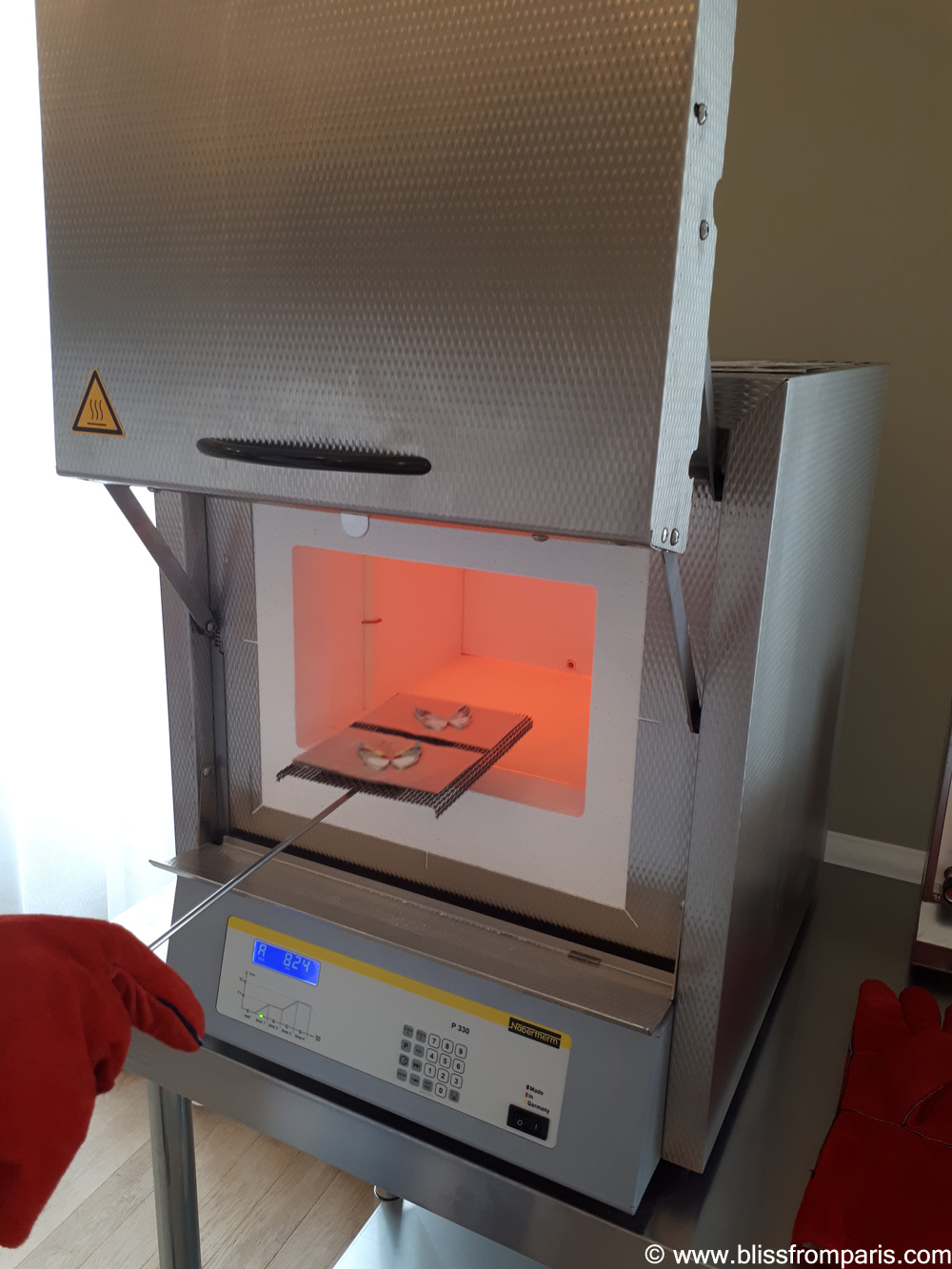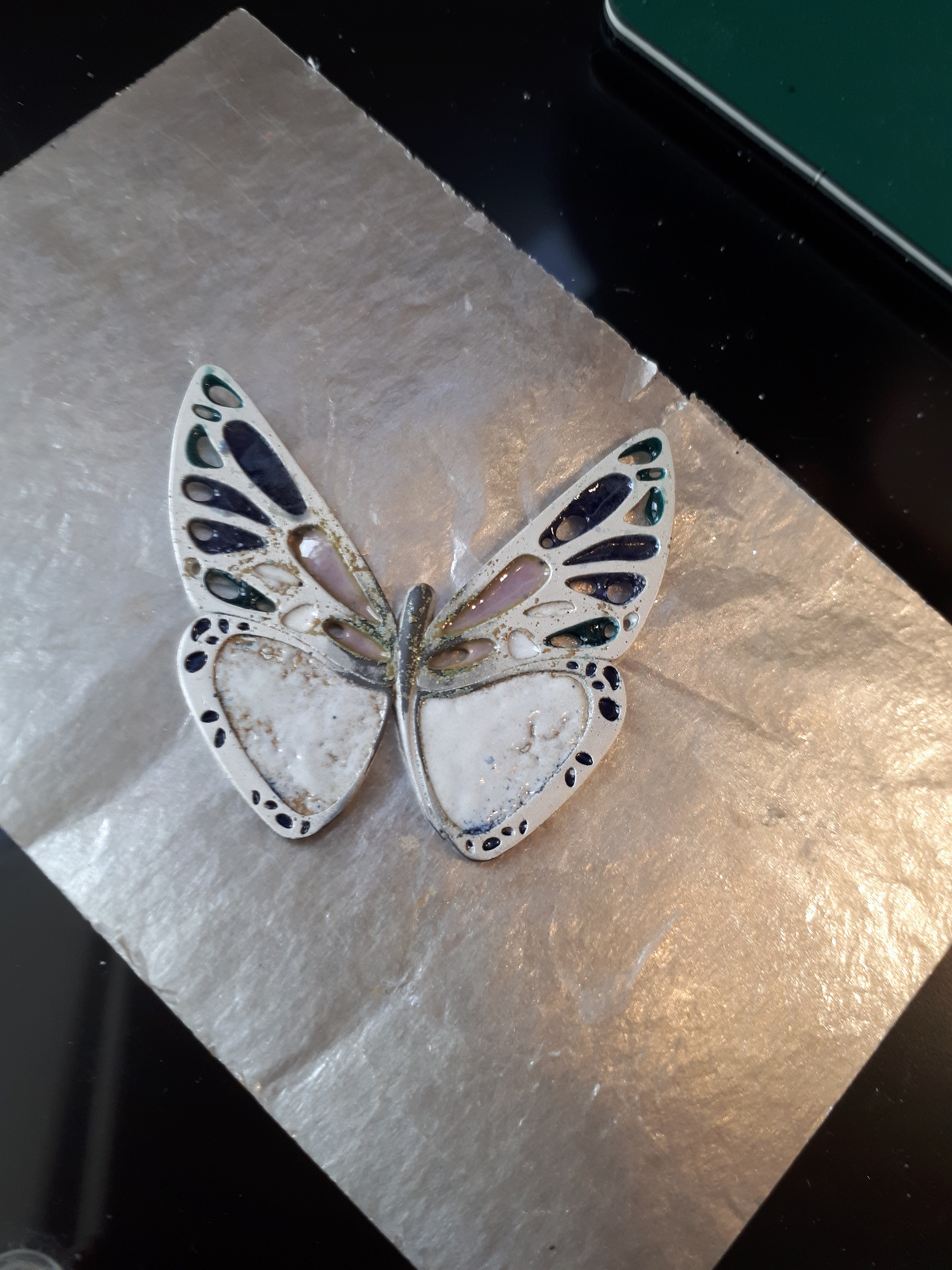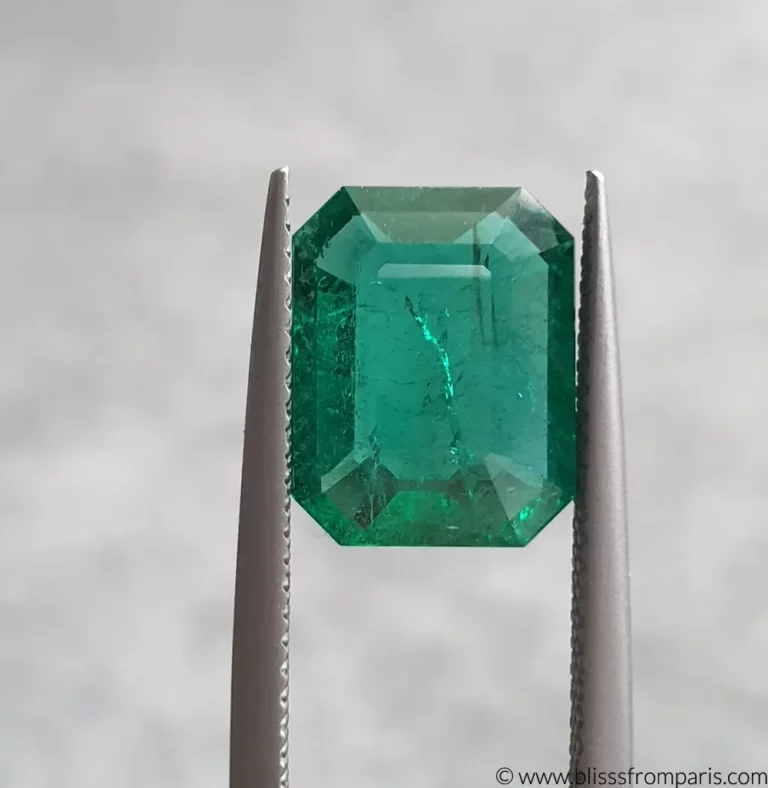The École des Arts Joailliers is the first school of introduction to jewelry open to the public. Since 2012, it is possible to follow some twenty course courses in the form of conferences or workshops on the history of the art of jewelry, know-how or even on the world of gemstones.
I was recently invited to Van Cleef & Arpels School to test their new course selection. I chose to learn a bit more about enamels. I propose to tell you my afternoon during which I followed the course entitled “Jewelry and enamel large fires”. In addition to the theory I was able to see and practice the enamelling technique.
So I went to the school VCA which is located at the hotel Ségur a few steps from the place Vendôme. To begin our course, it was explained to us that the essential material of the enamel was sand. But it is obviously pure sand, fine and resulting from the erosions of the crystalline rocks. Under the effect of the eruption, the magmas rise to the surface. The cooling gives rise to a glassy and translucent obsidian rock.
The email is composed of a colored or translucent vitreous layer on a support. There are 3 possible supports:
1- Terracotta -kaolin -glaze bath: ground enamels with metal oxide
2- Steel – industrial enameling for series, ground enamel and sprayed by gun
3- Precious metals (gold, silver, copper) -email applied to the metal with a brush
Then we learned a little more about the history of objects and jewelry enamelled through the centuries. Archaeological excavations confirmed the presence of enameled objects to Mycenae in Cyprus, around 1300 BC. In Europe there were 3 enamel routes. In the Middle Ages during the barbarian invasions, it was possible to observe a certain transmission of knowledge in the development of enamels for the ornaments of religious objects. At the Renaissance painted enamel develops and in baroque this technique is used for jewelery ornament. In the nineteenth century, the enamel regained its development in the art nouveau.
The magic of fire
To make enamel, you need fire. We spoke of the 3 fires necessary for the production of enamel:
1 / first fire: from sand to glass
The sand mixed with flux and calcium is placed in the oven at 1000 °. This mixture gives a syrup that is thrown into the cold water tank. This produces a glass frit.
2 / second fire: from glass to enamel
The glass fry is ground and mixed with lead (for gloss) and metal oxide (for colors) and is then placed in an oven at 1000 °, which results in a liquid A kind of enamel syrup that takes the form of enamel patties by hardening. These patties are then ground to obtain powder.
3 / third fire: The alliance of enamel and metal
The powder is placed on a wet substrate and placed in the oven at 850 °. The enamel melts and merges with the metal. The color of the enamel depends on the time spent in the oven, the metal support and the number of ovens.
The main techniques of enamel use:
• Champlevé: hollowed cavities engraved in the thickness of the metal to deposit the color
• Cloisonne: the thin strips of metals deposited vertically on the support which gives the shape of the pattern.
• The plique-a-jour: translucent enamels on a perforated support. The final rendering is comparable to the stained glass technique.
• Painted enamel: an enamelling to miniature paint mixed with a brush
• Grisaille: the enamel of a pasty consistency worked by successive layers on a black enamelled background
• The paillonne: interposition of thin motifs in gold or silver leaves or a complete sheet between two layers of enamel that gives a shiny and metallic effect
My butterfly after the first baking
The course ended with practice. I made several layers of enamel on a silver support. I confess that I will not be the next enameller because this beautiful technique is quite complex. Thanks to the super intervenants: Marie Oberlin and Isabelle Delahaye, I was able to realize my first enamel butterfly. I haven’t seen the time spent and I would have liked to stay a little more so I loved this course. I would highly recommend it if you also want to practice enamel. Don’t hesitate either to go to the Van Cleef & Arpels school website, I’m sure you will find a course that will tempt you.


